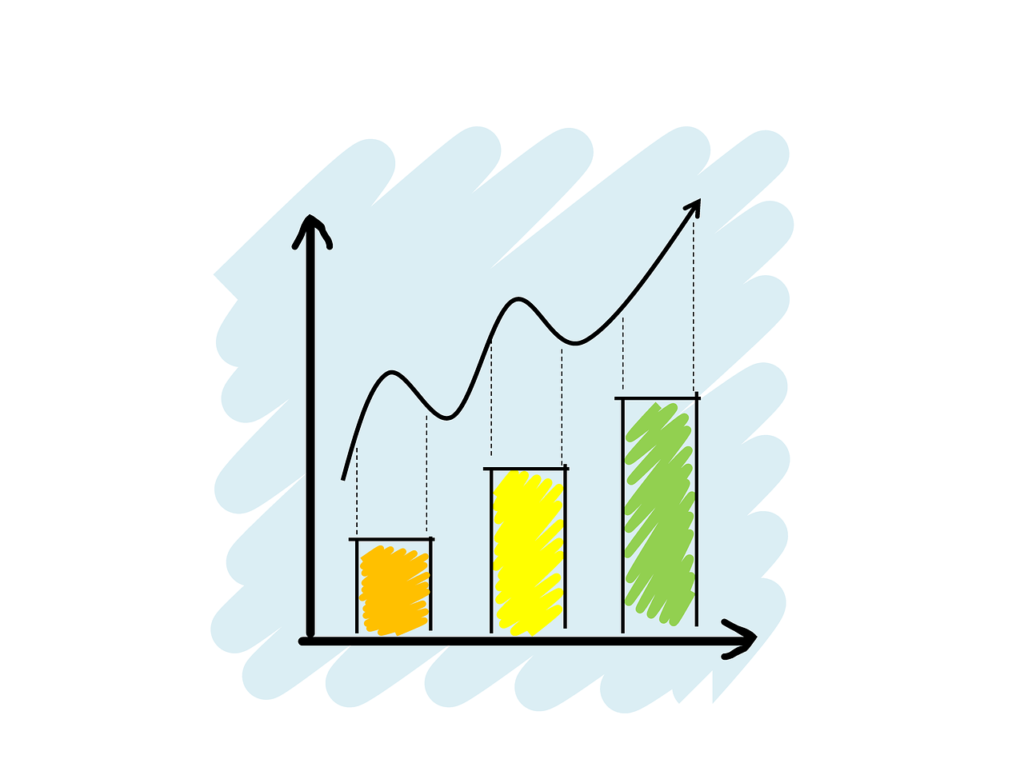Slope is an essential concept in mathematics and physics. It refers to the measure of the steepness of a line or a curve. The slope of a line is defined as the ratio of the change in the y-coordinates to the change in the x-coordinates between two points on the line. The slope of a curve, on the other hand, is the derivative of the function that defines the curve. In both cases, a steeper slope means a more significant change in the y-coordinates for a given change in the x-coordinates.
The steeper the slope, the more challenging it is to go up. Imagine a hill with a steep slope. Climbing up that hill would require more effort than climbing up a hill with a gentle slope. Similarly, in mathematics, a steeper slope means that the corresponding function is changing more quickly, and thus, it may be more challenging to work with.
When we plot a graph of a function, the slope of the graph tells us a lot about the behavior of the function. A positive slope means that the function is ascending from left to right, while a negative slope means that the function is descending from left to right. The greater the slope, the steeper the line, and the more significant the change in the function values.
In physics, slope is often used to descibe the motion of an object. The slope of a distance-time graph, for example, gives us the speed of the object. The steeper the slope, the faster the object is moving. Similarly, the slope of a velocity-time graph gives us the acceleration of the object. The steeper the slope, the more significant the change in velocity over time, and thus, the greater the acceleration.
The concept of slope is essential in mathematics and physics. A steeper slope means a more significant change in the function values or the motion of an object. Understanding slope and its properties can help us analyze and interpret graphs, functions, and physical phenomena.
What Does A Steeper Slope Mean?
A steeper slope refers to a topographical feature that rises at a very sharp angle, making it difficult to climb or traverse. It is characterized by a steep incline that requires more effort and skill to navigate than a gentler slope. Steeper slopes are commonly encountered in mountainous terrain, cliffs, and other natural features where the ground rises sharply. The steepness of a slope is determined by its gradient, which is the rate at which the elevation changes over a particular distance. The steeper the gradient, the more challenging it is to climb or descend the slope.

Is A Higher Slope Steeper?
A higher slope is steeper. The slope of a line is the measure of how steeply it rises or falls as it moves horizontally. It is calculated by dividing the change in the y-coordinate by the change in the x-coordinate between any two points on the line. If the slope is greater, it means that the line rises or falls more steeply over the same horizontal distance. Thus, a higher slope indicates a steeper line. For instance, a line with a slope of 2 is steeper than a line with a slope of 1.
What Does Steeper Slope Of Z Mean?
In the context of the species area relationship given by Alexander von Humboldt, a steeper slope of Z value (in the range of 0.6 to 1.2) indicates a stronger positive correlation between the area of a geographical region and the number of species present in that region. This means that as the area of the region increases, the number of species found in that region also increases at a faster rate. In other words, the steeper the slope, the more species-rich the region is likely to be. This relationship is prticularly evident when species relationships are plotted among very large areas like entire continents. A steep slope of Z value can be seen as an indicator of biodiversity hotspots, which are areas with a high concentration of species and are therefore of high conservation value.
Which Slope Is The Steepest?
The slope that has the highest absolute value is considered the steepest. This means that the slope with the greatest magnitude, regadless of whether it is positive or negative, represents the direction of the greatest change in the function. A positive slope indicates that the function is increasing from left to right, while a negative slope indicates that the function is decreasing from left to right. Therefore, the steepest slope can be either positive or negative, depending on the direction of the function. To summarize, the slope with the highest absolute value represents the steepest slope, and its sign determines the direction of the function.
Conclusion
A slope is considered steeper when it rises at a very sharp angle, making it difficult to climb or traverse. The steepness of a slope is determined by the angle at which it rises, with greater angles indicatng a steeper slope. When plotting species relationships on a large scale, such as entire continents, steeper slopes with Z values in the range of 0.6 to 1.2 are obtained using the species area relationship given by Alexander von Humboldt. A positive slope indicates an ascending function from left to right, while a negative slope indicates a descending function from left to right. Therefore, understanding the concept of slope and its steepness is crucial in various fields, such as mathematics, geography, and ecology.
